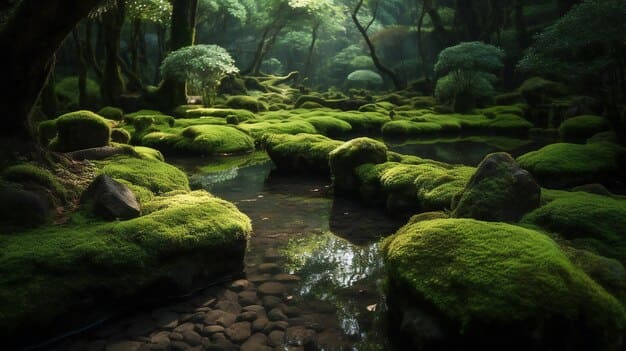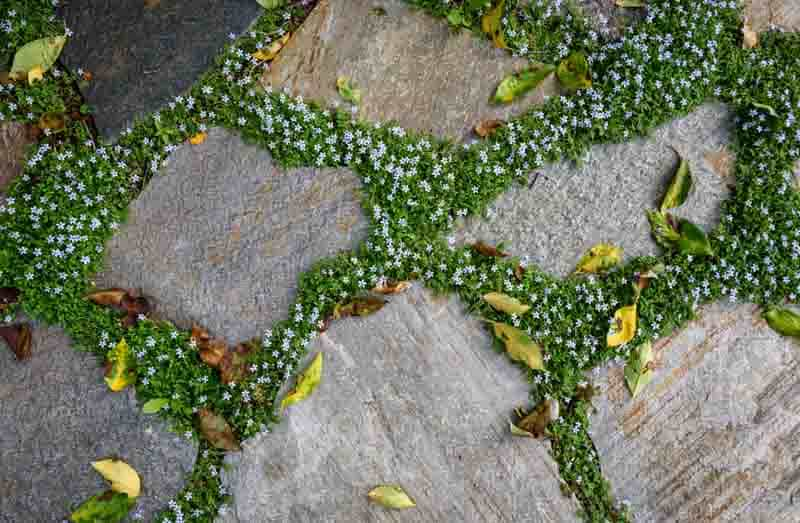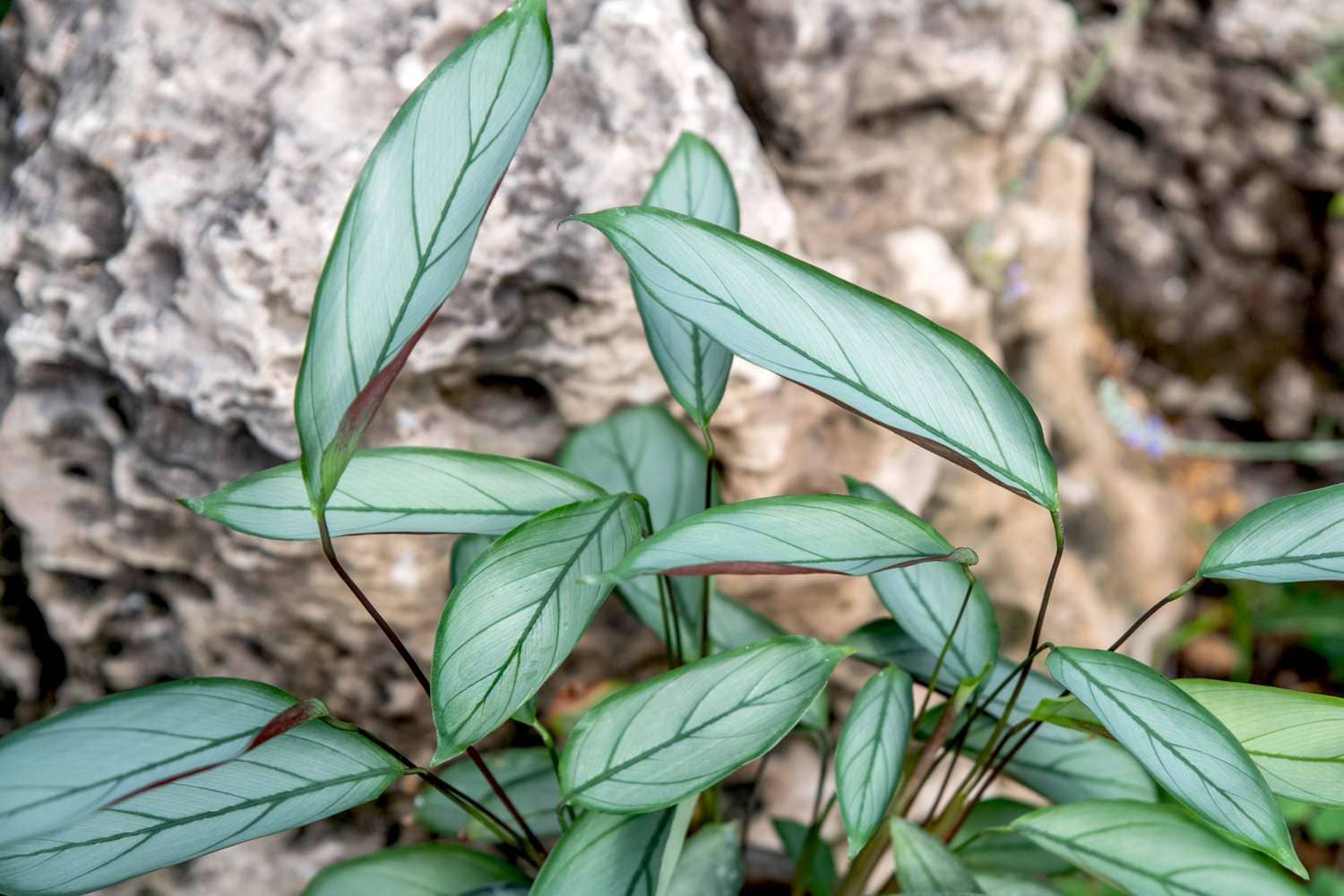Nestled amidst the serenity of Japan’s landscapes lies a hidden gem of tranquility: the enchanting world of Japanese moss gardens. These meticulously curated sanctuaries offer a serene escape from the hustle and bustle of modern life, inviting visitors to immerse themselves in the timeless allure of nature. In this article, we embark on a journey to uncover the secrets and significance of these verdant landscapes. Delving into their history, design principles, and cultural significance.
A Legacy of Tradition: Origins of Moss Gardens
The tradition of cultivating moss gardens traces back centuries in Japan, deeply rooted in the principles of Zen Buddhism and the appreciation of wabi-sabi, the aesthetic of imperfection and transience. Initially developed by monks seeking tranquil spaces for meditation, these gardens evolved into artistic expressions of harmony between humanity and nature. Moss, revered for its lush green hues and soft texture. Became a central element in these gardens, symbolizing humility, simplicity, and the passage of time.
Designing Serenity: Principles of Japanese Moss Gardens
Central to the design of Japanese moss gardens are principles aimed at fostering a sense of serenity and harmony. Unlike the meticulously groomed landscapes of formal gardens, moss gardens embrace a naturalistic aesthetic. With irregular pathways, moss-covered stones, and meandering streams creating an organic flow. Borrowed scenery, known as shakkei, is often incorporated, seamlessly integrating the surrounding landscape into the garden’s composition.
The selection and placement of elements are carefully considered, with moss varieties chosen for their compatibility with the local climate and soil conditions. Rocks, known as ishi, are meticulously positione to evoke mountains or islands. While water features such as ponds or tsukubai (stone water basins) add a reflective element. Enhancing the garden’s sense of tranquility.
The Artistry of Moss: Cultivating Beauty
Cultivating moss is both an art and a science, requiring patience, skill, and an understanding of its unique requirements. Unlike traditional gardens, which may feature a diverse array of plant species, moss gardens focus primarily on mosses, ferns. And other shade-loving plants that thrive in the cool, damp environment. Mosses are propagate through spores or division, with gardeners often hand-selecting specimens for their texture, color, and growth habits.
Maintenance of moss gardens is an ongoing process, with gardeners carefully tending to the mosses to ensure their health and vitality. This may involve removing debris, controlling weeds, and regulating moisture levels to create the optimal growing conditions. Over time, the garden evolves, with mosses spreading and intertwining to create a lush carpet of greenery that transforms with the seasons.
Cultural Significance: Moss Gardens in Japanese Art and Literature
Throughout history, moss gardens have captivated the imaginations of artists, poets, and writers, inspiring countless works of art and literature. From ancient scrolls depicting tranquil garden scenes to haiku poetry that captures the ephemeral beauty of nature, moss gardens have left an indelible mark on Japanese culture.
In literature, moss is often celebrate for its symbolic significance, representing resilience, endurance, and the cycle of life. In art, moss gardens are depicte as idyllic retreats, where weary travelers find solace amidst the verdant landscape. Even today, moss gardens continue to inspire creativity and contemplation, serving as a source of inspiration for artists and writers around the world.
Visiting Japanese Moss Gardens: A Journey of Discovery
For those seeking to experience the timeless beauty of Japanese moss gardens firsthand, there are numerous destinations to explore throughout Japan. From the iconic moss gardens of Kyoto’s temples to the hidden gems tucked away in remote mountain villages. Each garden offers a unique glimpse into the rich tapestry of Japanese culture and history.
As you wander through these enchanting landscapes, take a moment to pause and immerse yourself in the tranquility that surrounds you. Listen to the gentle rustle of leaves, feel the cool moss beneath your feet. And allow yourself to be transporte to a world where time stands still, and the beauty of nature reigns supreme.
Conclusion: Embracing the Serenity of Japanese Moss Gardens
In a fast-paced world filled with noise and distractions, Japanese moss gardens offer a sanctuary for the soul. A place where one can find solace amidst the beauty of nature. Through their timeless elegance and understated charm, these enchanting landscapes remind us of the importance of slowing down. Reconnecting with the natural world, and finding peace in the present moment.
As we reflect on the legacy of these ancient traditions, may we carry forward the spirit of harmony and reverence for nature. Cultivating our own inner gardens of peace and tranquility. And in doing so, may we find renewed inspiration, creativity, and joy in the beauty that surrounds us.





